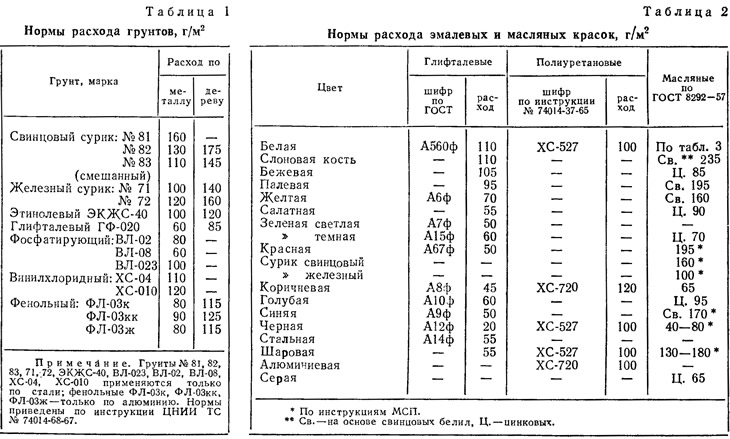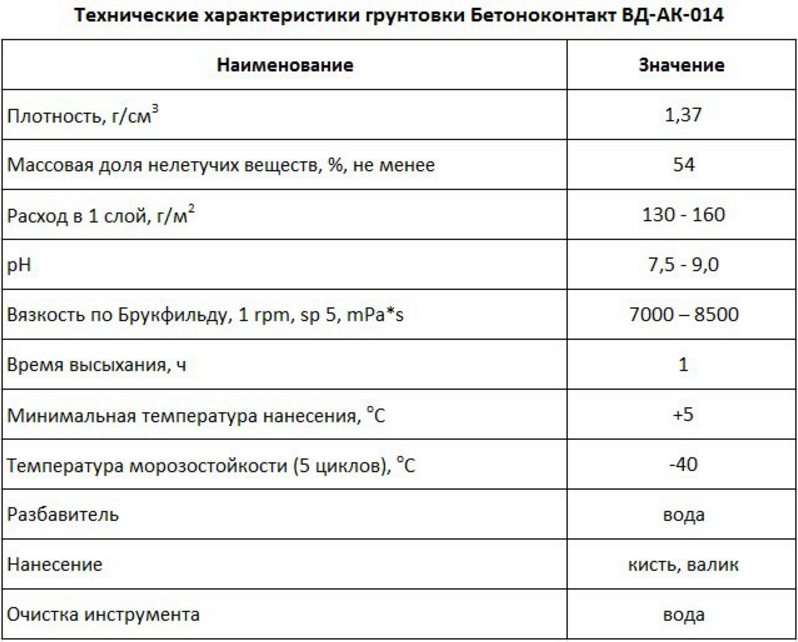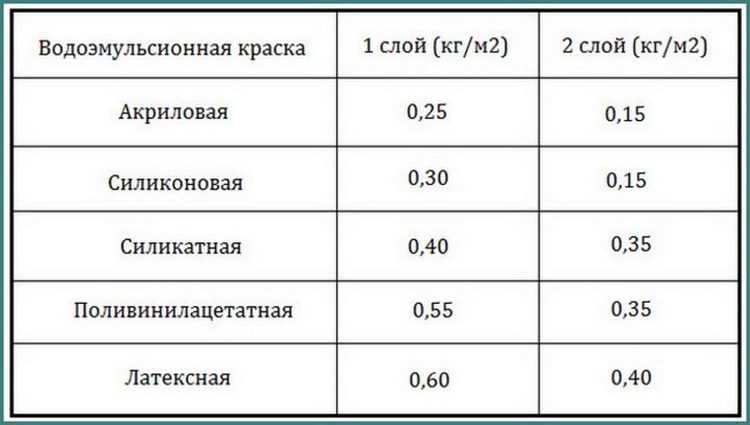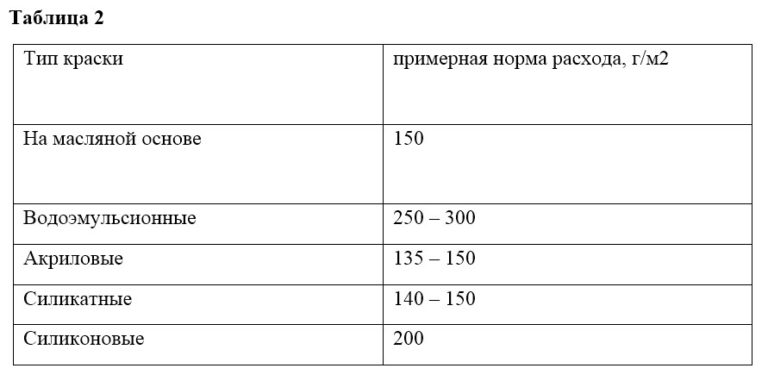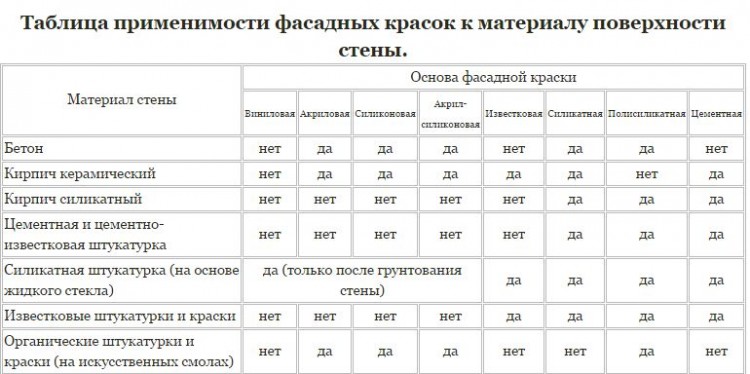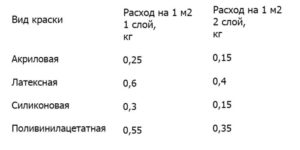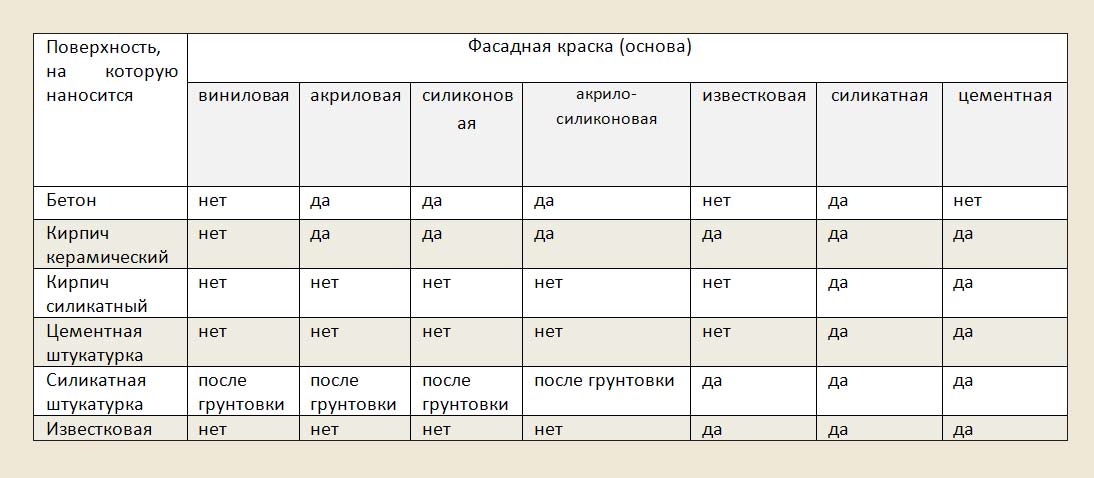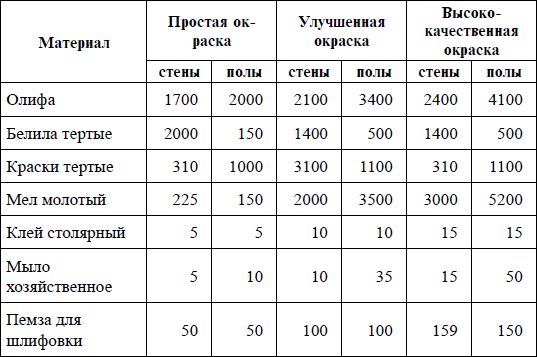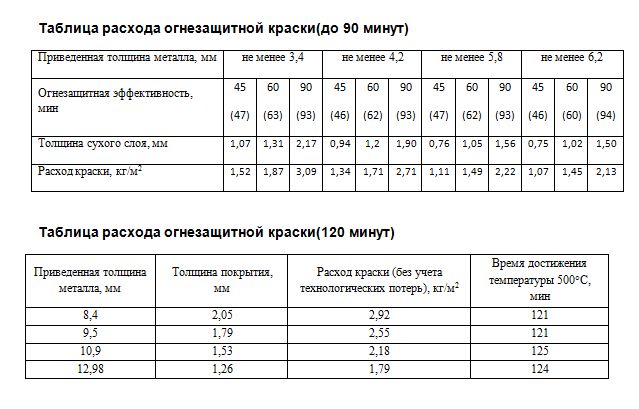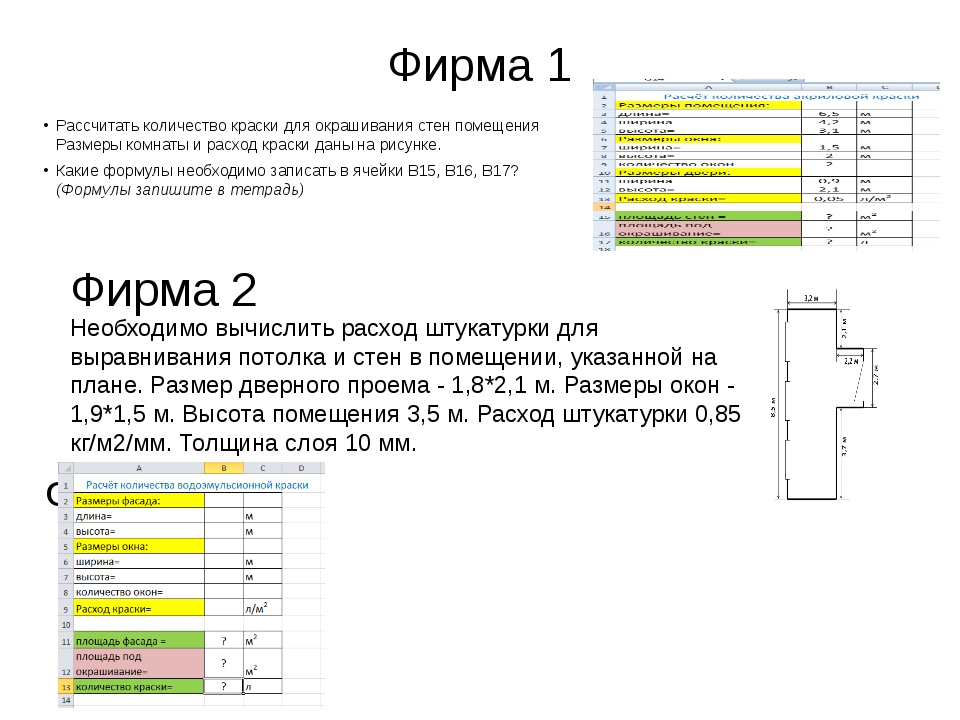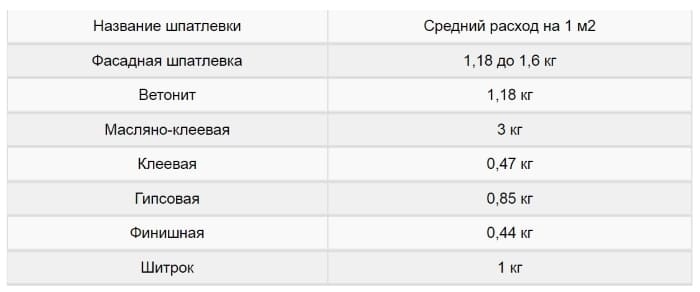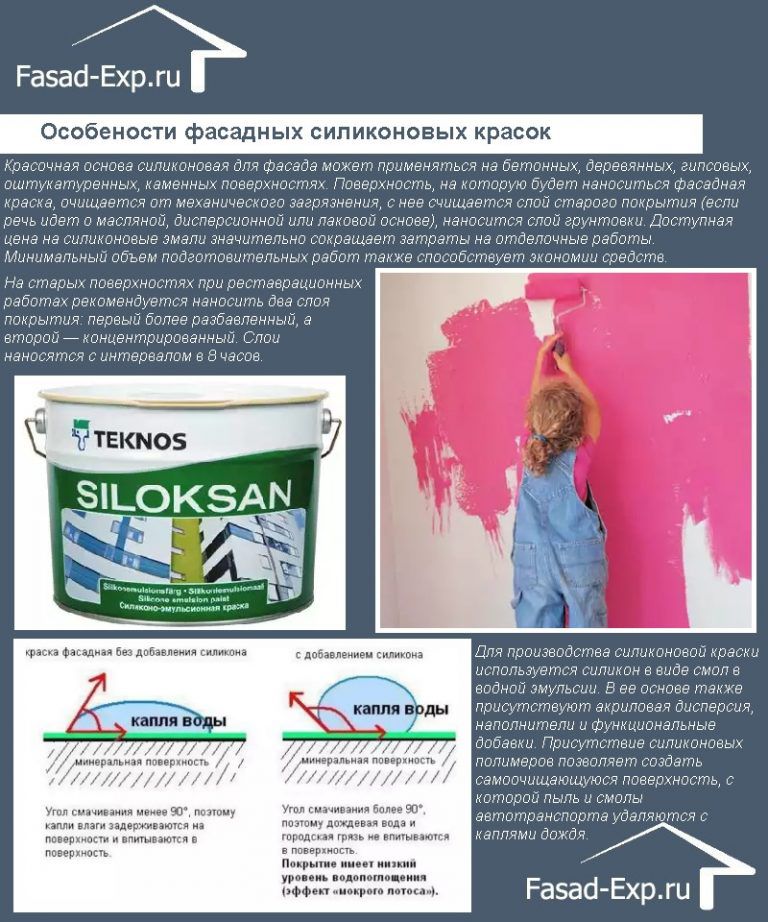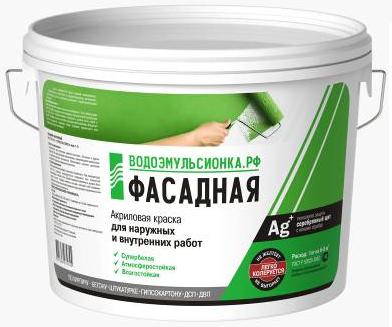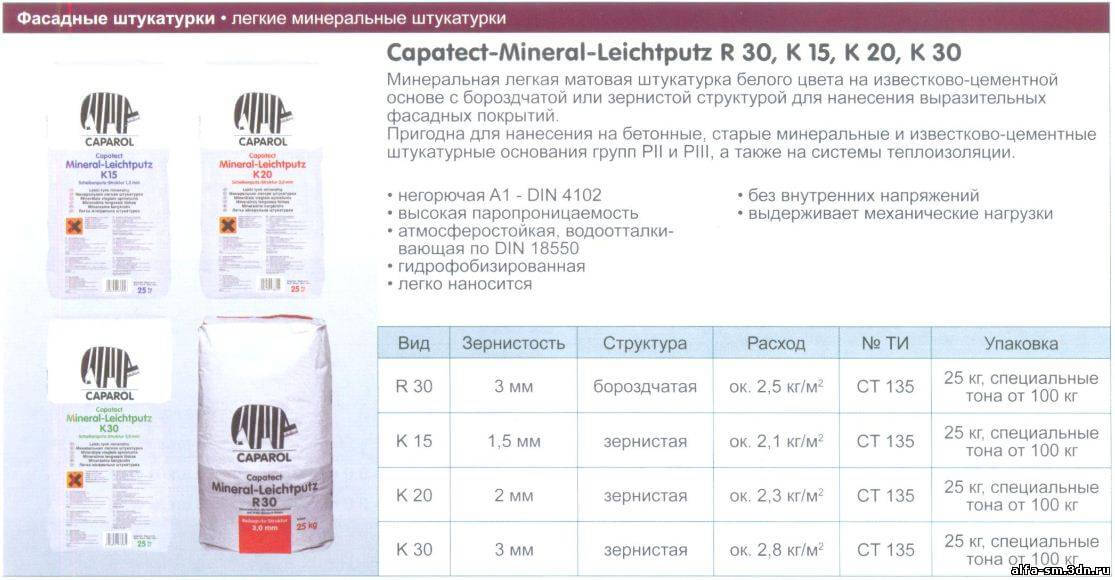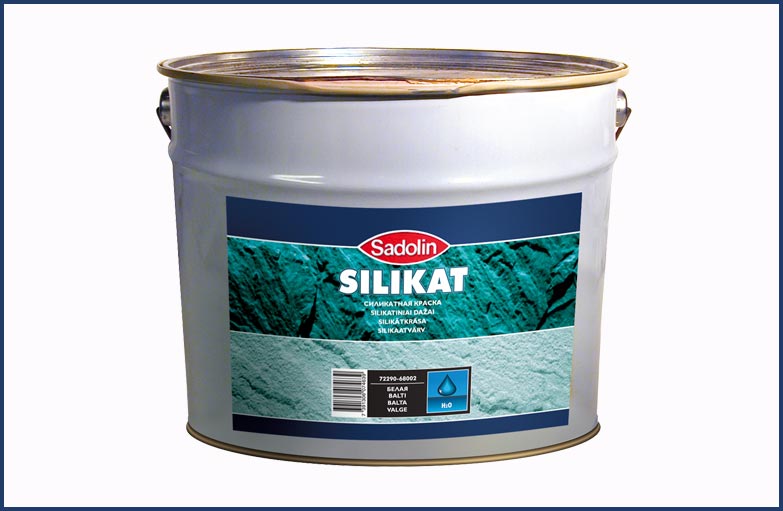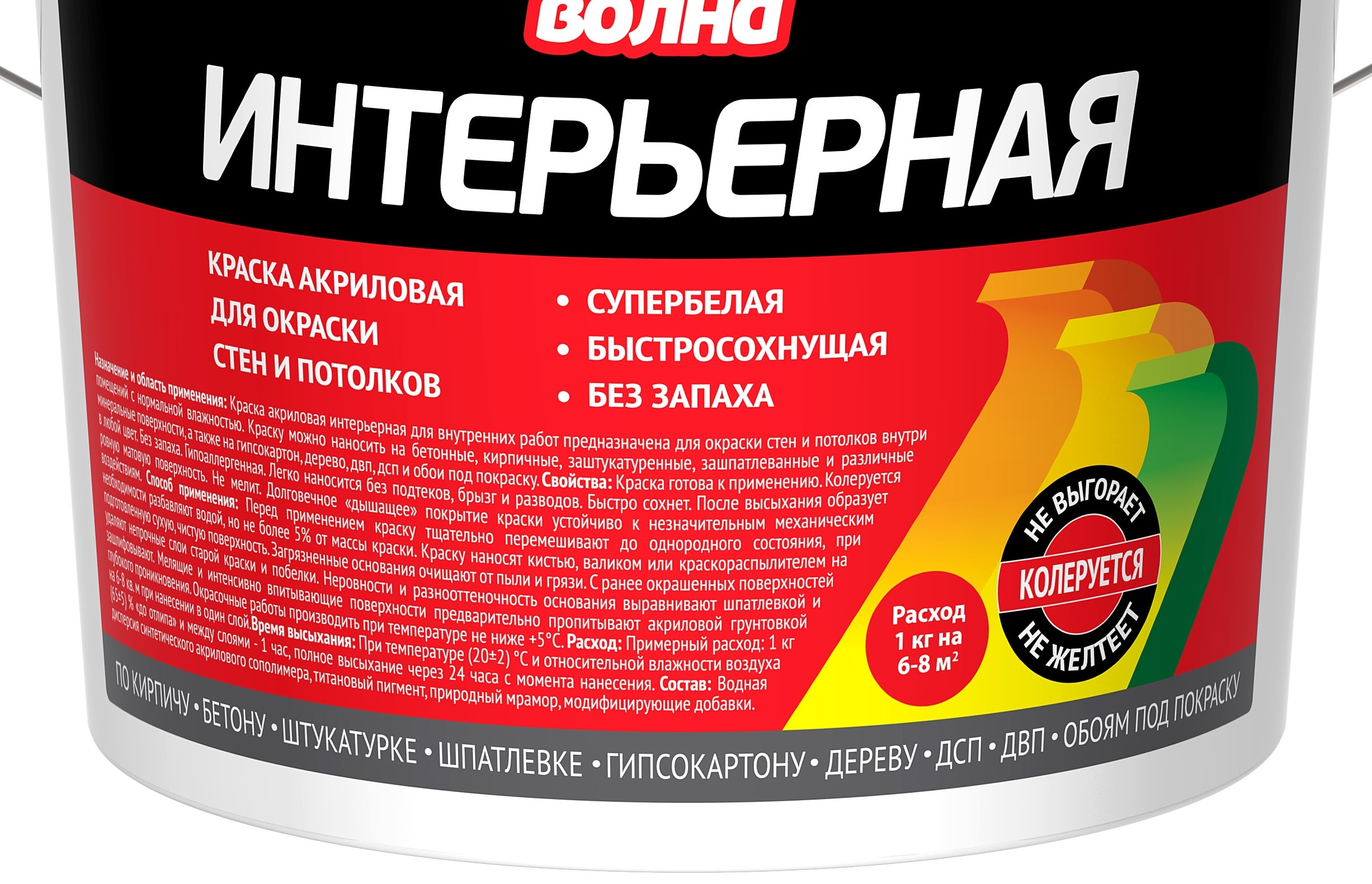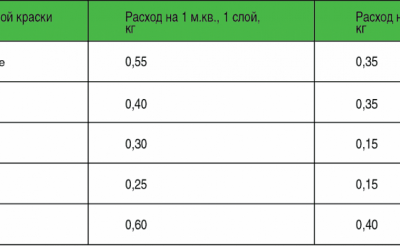Calculation depending on the type of material
The most important parameter that must be taken into account when calculating the required paint and varnish composition for facade work is the type of paint. The paint and varnish material is selected depending on the features of your facade. In this case, the consumption for each type will be individual.
Water based paint
The basis for water-based paint is water, which contains an insoluble emulsion in the form of a pigment. After applying such a composition to any surface, the water evaporates and only the pigment base remains in the form of a colored layer.
If you decide to purchase a composition of this type, then you should know that for facade work it is applied in two layers. The time interval between painting two layers should be more than one and a half hours.
Advantages:
- frost resistance;
- low water permeability;
- lack of reaction to exposure to ultraviolet rays;
- acceptable cost.
The calculation in this case should be based on the fact that about 300 grams of the composition is usually spent on 1 m2 of the surface of the facade walls. That is, if you need to paint 10 m2 of the facade, then you will need to purchase at least 3 liters of paint and varnish material.
Acrylic paint
 Facade acrylic paint retains its color well over time
Facade acrylic paint retains its color well over time
Acrylic based paints and varnishes are ideal for facade work. Advantages of acrylic painting:
- the duration of the preservation of the bright color and protective properties of the coating;
- resistance to aggressive atmospheric factors such as high humidity, wind or direct sunlight;
- ease of maintenance, for which conventional detergents are sufficient;
- fire safety;
- absolute safety for human health;
- versatility that allows you to handle any surface of the facade, from brick or concrete to solid wood.
As a rule, the consumption of acrylic paint is less than water-based paint. Usually it is from 150 to 200 grams per 1 m2. A more accurate consumption of facade paint for 1m2 depends on how bright you want to make the painted coating. Finally, you can only decide when directly applying the composition to the surface.
If in one or two layers you get the required shade, then for 1 m2 you will need about 130-170 grams. If you need to get a more saturated color, you will have to count on 200 grams per 1 m2.
Oil paints and varnishes
 Oil paint consumption depends on the desired color brightness
Oil paint consumption depends on the desired color brightness
The oil composition consists of drying oil, color pigments and all kinds of fillers. At the same time, fillers can be sold both as part of a paint and in the form of separate solutions. If you are dealing with thick-grated oil formulations, then they will have to be diluted a little before application.
The calculation of the consumption of oil paint, like acrylic, also depends on the desired color brightness. For example, if you apply a small amount of red compound to the surface of the facade walls, it will look pink. The standard consumption for painting on plaster is usually 150 grams per 1 m2 and may vary depending on the required color.
Alkyd paint
Alkyd paints and varnishes are based on alkyd resins, which are used in production. Its peculiarity lies in the fact that for facade work, the composition must be diluted with turpentine, kerosene or drying oil. When diluted with each of these components, there will be an individual consumption of material per 1 m2 of the painted surface.Therefore, in order to more accurately calculate the flow rate, you should take into account the amount of additional mixtures that are used to obtain a brighter shade.
Traditionally, the consumption of facade paint per 1 m2 of wall surface is small here and amounts to about 100 grams. That is, only a liter of paint will need to be spent on 10 m2. A distinctive feature of the alkyd composition is the creation of a stylish and original appearance. In addition, this paint will protect the facade surface from the appearance of fungi and mold.
Thus, now you know the approximate consumption for each type of paint. At the same time, when choosing a composition for facade work, you need to take into account a number of nuances associated with its consumption. This will save you time and will not buy missing paint. At the same time, you will not have an extra amount of paint and varnish composition.
Surface preparation as a way to reduce the consumption of facade paint

Skilled builders never omit the stage of preparing for painting activities. Competently carried out preparation of the object not only allows you to save up to 20% of materials, but also ensures the quality and long service life of the final result. And the reluctance of customers to soon return to the installation of scaffolding is understandable and natural. Preliminary activities include:
- Removal of old coatings;
- Removal of crumbling, crumbling areas;
- Cleaning from dust and dirt;
- Cleaning and disinfection of areas affected by mold or moss;
- Elimination of rust on metal surfaces;
- Sealing of defects;
- Leveling the base;
- Padding.
Molds tend to penetrate into the structure of porous building materials, and their reliable elimination is possible when removing not only the affected, but also the adjacent areas.
A logical continuation of conscientious preparation will be compliance with the rules for applying dye mixtures that can affect the final result:
- Outdoor painting operations are carried out at a temperature not less than + 5⁰С;
- The wall must be absolutely dry, so you need to observe the temporary norms for drying the plaster and do not paint after rain;
- For application, only a new tool is used - a roller or a brush;
- Each subsequent layer is applied perpendicular to the previous one, alternating vertical and horizontal directions;
- It is forbidden to apply a new layer before the previous one is dry due to the risk of cracking;
- You should not carry out painting work on windy days, as the dust raised settles on non-dried planes;
- Application begins from the upper sections of the facade so that non-solidified drops do not drip onto the underlying drying layer.
Even if all painting standards are observed, the consumption indicated by the manufacturer is unlikely to be achieved. The exceptions are cases where only a spray gun is enough for painting. Therefore, when determining the required purchase volumes, it is worth adding 10-15% to the calculated value in order to avoid annoying searches for an identical batch of goods.

In modern conditions, being calm about your financial plans is not easy, but with a reasonable and rational approach, everything will definitely work out. Math calculations won't take much of your time and effort, but it will give you such valuable peace of mind. Plan your life, this will allow you to look to tomorrow with confidence and not be afraid of unforeseen expenses, so typical for construction. Give your home uniqueness, decorating its exterior in perky juicy or restrained elegant color solutions, and let the city streets become much more cheerful!
Rating of facade paints
Facade paint differs from interior paint in elasticity and does not crack at temperature extremes. When choosing a finish, it is recommended to ensure that it is resistant to mechanical and chemical influences, ultraviolet radiation, moisture, etc. For painting the facade the following is used:
- Acrylic.The enamel has a certificate of conformity, so it is used for outdoor work. The composition is used for finishing brick walls. The dye is resistant to temperature extremes. It allows moisture to pass from the inside of the room and does not allow it to penetrate the walls from the outside. The composition is resistant to solar radiation and does not change its appearance for 5-10 years.
- VGT. This is a facade enamel that is applied to wooden, plastered and brick walls. After vgt is dry, a matte sheen appears on an even coating. The composition is resistant to precipitation and ultraviolet light. The white paint creates a breathable layer. It is applied by spray, brush or roller.
- Caparol. A silicone-based composition is made and used to cover plastered walls. It is allowed to enamel matt silicate or dispersion paints. The special material has hiding power and is resistant to aggressive environmental influences. You can dilute the composition with water. After its application, no film is formed on the surface.
- Parade. It is an elastic and crack-resistant compound that is resistant to aggressive atmospheric influences. Enamel retains its properties at temperatures down to -20 degrees, so it is used for facades in temperate climates. The silicone composition is waterproof and UV resistant.
- Vdak. It is a suspension with filler and pigments, based on a synthetic acrylic polymer. The enamel is characterized by weather resistance, moisture resistance, wear resistance. When precipitation falls on the painted surface, splashes and swelling do not remain. It is used for the facade of the temple and other structures erected from scaffolding. A primer is pre-applied to the surface.
- Pufas. This is a dispersion enamel, with the help of which the budgetary painting of surfaces is carried out. It is characterized by resistance to frost and atmospheric influences. To preserve the properties of the enamel, a primer is pre-applied. Available in white. To add a shade, the energy crystal color gmf w001 tinting pastes are used.
- Enamel to 174. Organosilicon enamel is used for painting metal products to protect it from corrosion. Retains its properties in the temperature range -60- + 150 degrees. Facades made of bricks, concrete, asbestos cement, reinforced concrete, and plastered surfaces are painted with enamel. The enamel can be tinted. The work must be carried out carefully, since it is difficult to wash the facade paint after drying.
When choosing paint for the facade, it is recommended
determine its technical characteristics and features of the foundation.
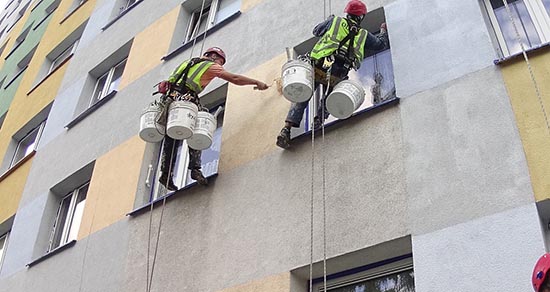
Examples of paint consumption calculations.
Example # 1: How to calculate the paint consumption when painting the walls of an ordinary room.
As mentioned earlier, you must first calculate the total area of the room, and then subtract the area of the window and door openings. In our case, you need to paint one wall. In this case, the height of the wall is 3 meters, and the width is 4 meters. The area of such a wall will be 12 sq. meters.
Next, you need to calculate the area of the door opening on this wall, in our case it is 2 square meters. meters. According to general rules, you need to subtract the area of the door (2 square meters) from the total area (12 square meters).
As a result, we get the following results: the surface area for painting will be 10 square meters. Next, you need to calculate the required amount of paint. For example, if a can holds 2.5 liters, which should be enough to paint an area of 25 square meters, given that 1 layer will be painted. If you need to paint the wall in 2 layers, then you only need 1 can.
Example # 2: Painting taking into account windows and doors.
If there is a need to paint the floor, ceiling, doors, then the same formula is used as in example # 1. In this case, the total area of the painted surface will consist of several components.
The areas of all walls, window sills, doors, ceilings, floors are calculated separately, which must then be folded.Next, you need to find the paint consumption indicated on the package, and calculate how much paint is required. If different types of paints are used for individual elements, then the area is first calculated, and only then the consumption of each of them.
Calculation of consumption when painting a room
As a rule, you can calculate the consumption of a water-based composition using a special calculator, which is available on many repair sites. Alternatively, you can calculate this figure manually.
To do this, you just need to measure the length and width of the surface and calculate its area using these indicators. Moreover, if there are any unpainted areas, then they should be subtracted from the total area. This will give us the net surface area to paint. Next, we multiply the result by the estimated consumption per 1 m2.
Consumption when painting the ceiling
There are three types on the market today water-based paints - for walls, ceiling, as well as universal means. Therefore, a special composition should be used to paint the ceiling.
Ceiling paint is less wear-resistant than wall cleaner. Consumption of paint and varnish composition for painting the ceiling is within 1 liter per 10 m2. In some cases, the amount of consumable stain for the ceiling can be reduced and with one liter you can paint up to 15 m2 of the surface.
Consumption for wall covering
The calculation of the amount of funds for the walls is made in the same way as for any other surface. Here the consumption is approximately 1 liter per 10 m2 of wall surface. To minimize the amount of dye, it is best to apply it over an acrylic primer.
Calculation depending on the type of material
The most important parameter that must be taken into account when calculating the required paint and varnish composition for facade work is the type of paint. The paint and varnish material is selected depending on the features of your facade. In this case, the consumption for each type will be individual.
Water based paint
The basis for water-based paint is water, which contains an insoluble emulsion in the form of a pigment. After applying such a composition to any surface, the water evaporates and only the pigment base remains in the form of a colored layer.
If you decide to purchase a composition of this type, then you should know that for facade work it is applied in two layers. The time interval between painting two layers should be more than one and a half hours.
Advantages:
- frost resistance;
- low water permeability;
- lack of reaction to exposure to ultraviolet rays;
- acceptable cost.
The calculation in this case should be based on the fact that about 300 grams of the composition is usually spent on 1 m2 of the surface of the facade walls. That is, if you need to paint 10 m2 of the facade, then you will need to purchase at least 3 liters of paint and varnish material.
Acrylic paint
Facade acrylic paint retains its color well over time
Acrylic based paints and varnishes are ideal for facade work. Advantages of acrylic painting:
- the duration of the preservation of the bright color and protective properties of the coating;
- resistance to aggressive atmospheric factors such as high humidity, wind or direct sunlight;
- ease of maintenance, for which conventional detergents are sufficient;
- fire safety;
- absolute safety for human health;
- versatility that allows you to handle any surface of the facade, from brick or concrete to solid wood.
As a rule, the consumption of acrylic paint is less than water-based paint. Usually it is from 150 to 200 grams per 1 m2. A more accurate consumption of facade paint for 1m2 depends on how bright you want to make the painted coating. Finally, you can only decide when directly applying the composition to the surface.
If in one or two layers you get the required shade, then for 1 m2 you will need about 130-170 grams. If you need to get a more saturated color, you will have to count on 200 grams per 1 m2.
Oil paints and varnishes
Oil paint consumption depends on the desired color brightness
The oil composition consists of drying oil, color pigments and all kinds of fillers. At the same time, fillers can be sold both as part of a paint and in the form of separate solutions. If you are dealing with thick-grated oil formulations, then they will have to be diluted a little before application.
The calculation of the consumption of oil paint, like acrylic, also depends on the desired color brightness. For example, if you apply a small amount of red compound to the surface of the facade walls, it will look pink. The standard consumption for painting on plaster is usually 150 grams per 1 m2 and may vary depending on the required color.
Alkyd paint
Alkyd paints and varnishes are based on alkyd resins that are used in production. Its peculiarity lies in the fact that for facade work, the composition must be diluted with turpentine, kerosene or drying oil. When diluted with each of these components, there will be an individual consumption of material per 1 m2 of the painted surface. Therefore, in order to more accurately calculate the flow rate, one should take into account the amount of additional mixtures that are used to obtain a brighter shade.
Traditionally, the consumption of facade paint per 1 m2 of wall surface is small here and amounts to about 100 grams. That is, only a liter of paint will need to be spent on 10 m2. A distinctive feature of the alkyd composition is the creation of a stylish and original appearance. In addition, this paint will protect the facade surface from the appearance of fungi and mold.
Normal consumption
Traditionally, the consumption rates of acrylic enamel are from 170 to 200 grams per 1 m2. It should be borne in mind that for acrylic the amount of material is measured in grams, and not in milliliters, as for water-based paint.
The standard only applies to work with smooth surfaces. That is, it can be a ceiling or walls covered with a finishing putty or an abrasive cloth with fine particles. When working on rough, uneven surfaces, the flow rate may be higher than usual.
Calculation of the amount of acrylic paint for wallpaper
If you want to paint non-woven wallpaper with an acrylic agent, then the average cost will be from 200 to 250 grams per 1 m2.
To make wallpaper painting more economical, you first need to choose the right roller. Not only the consumption of funds, but also the texture depends on the correct choice of the roller.
For example, if you need to paint the smooth surface of the wallpaper, then it is better to take a roller with a short nap up to 5 mm long. For economical staining of a textured surface, you should take a roller with a long pile (5-25 mm), which will help to achieve uniform staining.
 For economical painting of wallpaper with acrylic paint, you need to choose the right roller
For economical painting of wallpaper with acrylic paint, you need to choose the right roller
Acrylic consumption when painting the facade
For an economical and at the same time high-quality painting of the facade, you need to choose the right tool and pre-treat the surface. Depending on the texture of the facade, paint consumption can range from 180 to 200 grams per 1 m2. However, painting with decorative plaster can be more expensive and you will need 220-250 grams of material.
Consumption when using acrylic textured paint
If you want to renovate using textured acrylic enamel, then the costs here can be much higher than usual. On the label, manufacturers indicate consumption rates, which range from 1 kg to 1.2 kg per 1 m2.
However, for high-quality painting, one should not blindly rely on the numbers indicated on the bank, since they are calculated taking into account the work with an ideal surface.Therefore, ideally, it is better to purchase material with a certain margin of about 5% more than usual. This is necessary to compensate for the unusual texture.
For interior painting and priming, the acrylic compound for the first layer is best diluted with a water base up to 5%. The time between paint coats should not be less than 4 hours. To reduce consumption, experts recommend painting with an acrylic compound at a temperature of about +20 degrees against a background of normal humidity.
 Using high-quality acrylic paint, you can do with two layers of application
Using high-quality acrylic paint, you can do with two layers of application
Beautiful examples
In the recent past, plaster was used only for leveling walls. Now interior designs are full of beautiful examples of painting plastered surfaces.
One of the most common applications is painting plaster in two colors. To do this, you can combine two neutral colors with each other, for example, white and black.
A gradient in the interior looks very beautiful and stylish when shades of the same color palette, different in saturation, are combined.
Often, bright colors are chosen for the base layer, such as rich turquoise or burgundy, and the second layer is gold and bronze.
First, one tone is applied to the surface using a roller, leaving it to dry for 2-3 hours. After a while, a second is applied, barely touching the protruding areas of the coating.
To simplify the staining process, you can add the color of the selected shade to the plaster solution.
Consumption of water-based paint per 1m2
The quality of the prepared surface - insufficient application of putty and primer necessitates the use of a larger volume of paint to compensate for possible missing bonding elements. The use of a standard construction roller in painting can cause some deviation from the consumption rates per 1m2 declared by the paint manufacturer. In terms of application speed and convenience, the roller is the most suitable tool, however, not the most economical in terms of material consumption. The casus is that today only the “lazy” does not produce a water-based emulsion.
The modern market for such products is overcrowded and it will not be superfluous to pay increased attention to the inscriptions on the labels, in the content of which there are sometimes some inconsistencies.
- acrylic is the most economical;
- silicone - takes the second position in terms of consumption;
- silicate - third place in the economy rating;
- polyvinyl acetate - in fourth place;
- latex - at the bottom of the list.
- the promise of the consumption of one kilogram of the composition per 15m2;
- while most manufacturers announce the average consumption rate of 1 kg per 10m2.
After drying the acrylic water-based material, a reliable and durable protective layer is obtained, which is not afraid of mechanical stress and high humidity. In most cases, acrylic paints are environmentally friendly and safe for human health.
They are suitable for processing walls both indoors and for facade, outdoor work. The first step is to decide which type of paint and varnish material will be used to paint the ceiling or walls. The characteristics of water-based paints and their consumption are determined by the composition of the material
Here is a list of the main types of water-based dyes and their consumption for one-layer and two-layer applications: These water-based mixtures are based on silicone, to which other substances are added, so that after painting the surface remains vapor-permeable. Silicone paints can be used not only for walls and ceilings, they can even be applied to floors, where they will prevent the appearance of mold and mildew. In stores today you can buy a polyvinyl acetate water-based dye mixture that contains PVA glue. Polyvinyl acetate dyes have minimal moisture resistance.
Consumption of this paint is the same as for mineral dyes. They include any natural minerals such as cement, hydrated lime, and others. These coloring mixtures are used only for interior finishing, applied to brick and concrete substrates.
Usually consumption water-based paint on 1m2 - approximately 550 grams, and 350 grams for the second application.
Tips & Tricks
Before buying a dispersion, you need to carefully read the instructions or recommendation on the label. Usually, manufacturers indicate the consumption of their products in one liter or one kilogram for a certain area.
You also need to remember that the rate of dispersion consumption is indicated for painting the surface, as a rule, in one layer. If you plan to paint the wall twice or three times, then you need to buy a coloring composition 2 or 3 times more. Surface painting is usually performed in 2-3 layers.
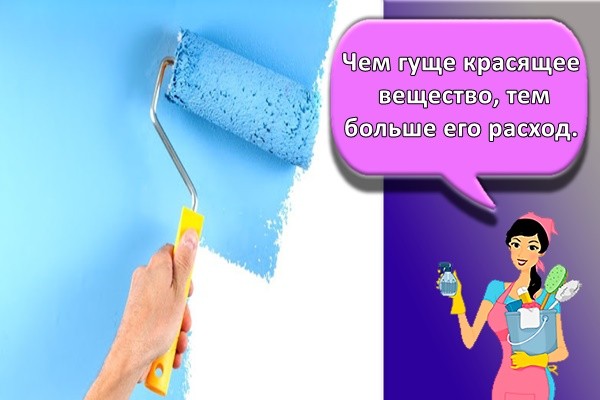
When buying paint, you must immediately purchase a primer. Acrylic is also desirable. The primer will help to reduce the consumption of acrylic, prevent colored spots from appearing, and will also protect the walls from the development of mold. The rate of consumption of soil is also indicated on the label. All you need to know is the surface area to paint.
Ordinary water will help to reduce the consumption of acrylic dispersion. Preferably clean, room temperature. True, it is not recommended to dilute the composition too much. Usually add no more than 5 percent water based on the total volume of the dispersion. If painting is carried out in several layers, then before applying a new one, you need to wait 3-4 hours for the previous layer of acrylic to dry.
If an acrylic emulsion is used for repairs, then the consumption of the composition is approximately the same as for the dispersion - 180-250 grams per 1 sq. meter. Moreover, when applying the second layer, only 150 g of paint will be left for the same footage. A little more silicone emulsion is required. The consumption of silicone paint is 300 grams per square meter of area. To paint the same footage with a second layer, you will need only 150 g of emulsion.
There is also paint with the addition of silicates. It is an emulsion containing liquid glass. The consumption of such paint is higher than that of acrylic dispersion. For 1 sq. square meter leaves 400 grams of emulsion. Moreover, for the second layer for exactly the same footage, as much as 350 g of the composition will be needed.
The thicker the coloring matter, the greater its consumption. Acrylic water-dispersion paint is advantageous because it is relatively cheap, diluted with ordinary water, and is also very economically consumed. The thinnest layer gives the aerosol formulation. This is an acrylic spray paint.
2> Consumption of acrylic paint per 1 m2 when painting in 2 layers: the subtleties of the calculation
Repair work is impossible without correct costing of materials
It is especially important to correctly calculate the amount of paint, which will significantly save not only financial resources, but also time.
Acrylic paints are some of the best on the market, but they cost a lot of money. If you buy too much of the substance, there will be excess, but the shortage threatens not only to interrupt the work process, but also to break the identity of the shades on the painted surface.
Let's consider how to correctly calculate the amount of paint required for repair work.
What can affect paint consumption?
Often on paint cans they write how much volume is enough for a certain area. Only blindly using such numbers is not worth it, because all averaged calculations are based on the fact that the walls in the house are perfectly even. In real life, much more paint is needed than is stated in the instruction sheet on the container.
The main factors that affect paint consumption:
- method and methods of applying paint to walls or facades;
- what color was chosen;
- wall texture;
- what type of paint will be used.
Possible methods and means of application
A variety of tools are used to apply acrylic paint. Using a medium-pile flat roller can create a flat relief, or if you want to achieve a stone wall effect, a short-haired roller is better. The specifics of rolling in both cases follows the same principle.
If we talk about a spray gun, the result of the work will depend on what kind of tool is chosen, what kind of mechanical pressure will be used during operation.
<?php related_posts(); ?>
Standard flow calculations
On average, if we are talking about acrylic paint (for facade or for interior work), then one square meter takes from 170 to 210 grams. You also need to take into account the factor that for acrylic paint all calculations are made in grams, not milliliters.
To correctly calculate the number of square meters for painting, calculate:
- distance between floor and ceiling;
- the length of each of the walls of the room;
- multiply the length by the width.
You will learn more about paint consumption per 1m² in the following video.
Calculation of the amount of acrylic-type paint for wallpaper
Acrylic wallpaper paint has the following benefits:
- does not release toxins;
- has a good adhesion coefficient;
- dries quickly;
- is inexpensive;
- resistant to moisture and temperature.
If you need to apply acrylic paints on non-woven wallpaper, the standard consumption will be 210-260 grams per 1 m². In order to make painting as economical as possible, the main thing is to choose the right roller. If the paint is applied in 2 layers, the costs will be, respectively, 400-450 grams per square meter.
Not only the material consumption, but also the layer structure will depend on which roller is purchased.
If we are talking about painting wallpaper with an absolutely flat surface, then to save money, a roller with a pile of at least five millimeters is chosen. More material is used to cover textured surfaces; for painting such planes, a roller is needed with a pile length of at least 25 mm.
We consider the consumption of dye for painting the facade
There are options when you can significantly save paint without compromising the quality of the coating. The consumption of the substance will depend on the tool that will have to be used, as well as on the material from which the facade is made and its texture.
At the standard rate, about two hundred grams of paints and varnishes are spent on painting the facade per one square meter of the coloring matter. If painting is carried out on decorative plaster, the paint consumption increases by at least fifty milliliters for each square meter.
Factors affecting the final calculation
In order to correctly calculate the consumption of the composition with acrylic, several important factors must be taken into account. After all, the paint is applied to the surface of different porosity, with different tools, moreover, not always in one layer. All these nuances need to be taken into account before starting repairs.
Application method
The paint is applied to the walls using various tools: a brush, roller, spray gun. The thinner the layer is, the greater the savings in the composition with acrylic. The most economical is the spray method using a spray gun. If a roller is used, it is best to buy a short nap tool. It is more economical in terms of acrylic consumption.

Base
Composition with acrylic can be painted on any surface. When painting a smooth and primed wall, the consumption is minimal. Most of the acrylic is spent on painting a porous, rough, not treated with soil surface (brick, stone, cinder block).
Number of layers
Usually surfaces are painted with acrylic dispersion in 2 layers. In rare cases, this value is equal to 3 or 5. The main thing is to remember that for each new layer, at least half of the established paint norm is consumed. If for the first time for painting 1 sq. meter of base used 250 grams of acrylic, then the second time you need to spend another 150 grams. Just 2 layers will take 400 grams.




